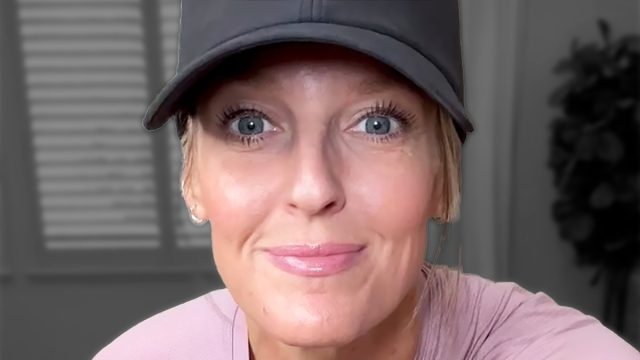7 Diet Hacks for Getting "Toned and Lean" in Your 40s

Are you struggling to shape up in your forties? Julie Clouse is a social media influencer and fitness and macros expert who tries to "inspire others to be the best version of themselves." In a new social media post she unveils her healthy habits for losing weight after 40. In a new post, she reveals a few things that helped her get fit in perimenopause. "Eating habits that helped me get toned and lean in my 40s," she writes, revealing 7 nutritional habits that helped her achieve her enviable body.
She Increased Her Protein Intake
The first thing she did? Increased her protein intake. "Increasing my protein intake to eat my body weight in grams of protein, has not only improved muscle recovery, but also made me feel more satiated, leading to positive changes in my body composition," she writes.
She Ate 3 to 4 Large Meals a Day
Eating 3-to 4 large meals a day was also game-changing. "Instead of skipping breakfast or lunch and later binge eating snacks and being behind on protein goals, I now eat larger meals, which helps me avoid excessive snacking and overeating," she says.
She Ate 80% Whole Foods
"Transitioning to a diet of 80% whole foods (veggies, fruits, lean proteins, whole grains) from one that was not protein focused and a lot of processed foods, has left me feeling energized, with clearer skin, and significantly better overall," she says.
She Ate 20% of Foods That Fulfilled Her Cravings
She allotted the remaining 20 percent to foods that fulfilled her cravings. "Allowing myself to enjoy 20% indulgent foods like sweets and pizza prevents binging since I'm not completely depriving myself. Do not deprive or call foods off limits, just make them fit in your diet in moderation. Life is so much better with some indulgence!" she says.
She Ate Similar Meals
She also ate consistent and similar meals daily. "Preparing simple, enjoyable meals on repeat saves time and reduces overwhelm, especially if you're counting macros," she say
She Fueled Her Body Properly
Fueling her body properly was another game-changer. "For years, I thought I needed to eat less to look toned. But staying in a constant diet state kept me from seeing results. Once I focused on eating enough to support muscle growth, my body composition finally changed. You can't build a strong, lean body if you're always under-fueling!" she said.
She Took Creatine Daily
Taking creatine daily was the final helpful habit. "One of the simplest and most effective supplements! 5g of creatine daily helps with muscle strength, recovery, and overall body composition. It also supports energy levels during workouts, making it easier to push harder and build lean muscle," she says. And if you enjoyed this article, don't miss I'm a Nutritionist and Here Are 25 Weight Loss Truths You Need to Hear.




